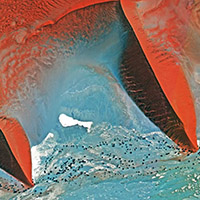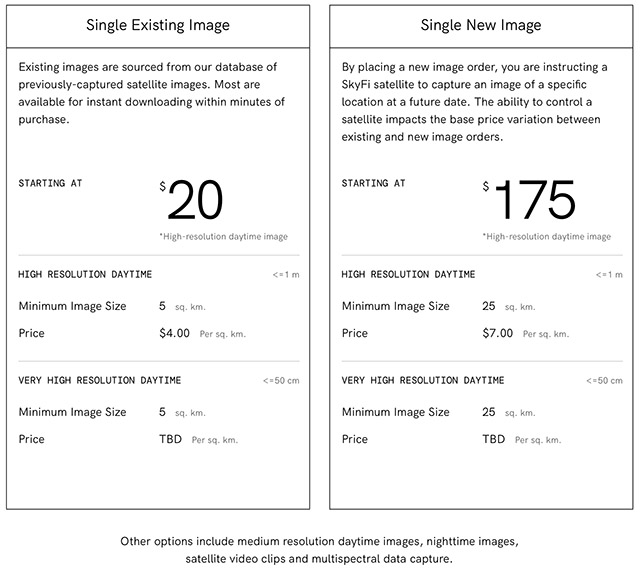The photographic space race & the democratization of satellite imagery
posted Wednesday, January 25, 2023 at 12:30 PM EDT

Last week, SkyFi officially launched its new satellite photography on-demand system. Powered by more than 80 in-network satellites, users can select an area they want to photograph using SkyFi's satellites and capture custom satellite images. While being able to capture images like this using commercial satellites isn't new, SkyFi's services are distinctly affordable, starting at $175 for brand-new image capture (or $20 if you want to buy existing satellite photos).
Compared to tens, or even hundreds of thousands of dollars, SkyFi is relatively affordable and extremely accessible. SkyFi is within reach for personal, academic and commercial projects. For example, you can use SkyFi for agriculture, forestry, insurance and urban planning. In a future feature update, customers will be able to use SkyFi to monitor change over time, which could be important for many environmental applications.
As of now, SkyFi offers high-resolution optical and multispectral still photography and video. There's even stereo photography for 3D modeling projects. The SkyFi team, and its 25 partners, are developing a higher-res optical feature, radar imaging and hyperspectral photography.
SkyFi is very easy to use. You simply download the app (iOS and Android) or use the web app on your desktop browser and search for the area you want to photograph with SkyFi's satellite. When you enter a location, you'll see existing images, when available, and be able to designate the precise area you want to photograph. You can select the date and general time frame (day versus night) that you want the imagery captured. The pricing is straightforward and visible when you make your selections. Once the images have been captured, you can download them.

SkyFi is only the latest entrant to the satellite space race. There are a lot of satellites orbiting Earth. As of January 2022, 8,261 satellites were orbiting the Earth, nearly 5,000 of which are active. That was an increase of nearly 2,000 satellites compared to January 2021, so it's safe to assume that there may be more than 9,000 satellites up there right now. It's great news that people will be able to capture satellite images without breaking the bank, and some photos and videos captured by satellites will benefit humanity at large. Still, it's possible to have too many satellites in orbit. With major companies such as SpaceX, OneWeb, Amazon and StarNet consistently adding satellites into orbit, we could easily hit 100,000 satellites down the road. It'll be congested up there, and the issue of space debris will only get worse. Plus, all those satellites are very bad for ground-based astronomy.
While SkyFi's network of around 80 satellites is relatively small, Sony is entering the satellite space race with an even smaller number of satellites – just one. Sony's Star Sphere project will include a nanosatellite equipped with a Sony full-frame Alpha mirrorless camera and 28-135mm F4 zoom lens.
Sony hasn't said which camera will be on the satellite, but the company has shared some interesting details about its project. The Star Sphere satellite will orbit between 500 and 600 kilometers (roughly 300-770 miles) above Earth. The satellite will travel along one of 16 pre-determined orbital paths, taking about 90 minutes to orbit Earth fully. Customers will be able to purchase a 10-minute window within that orbital period and take control of the onboard Sony Alpha camera. You'll be able to remotely adjust ISO, aperture, shutter speed, and presumably the zoom on the lens. You can capture photos and videos during your window.
Between SkyFi, which prioritizes a broader, affordable approach to satellite imagery, and Sony's Star Sphere, which is more about user control over the camera and less about high-res satellite imagery of specific locations, there are exciting options for everyone interested in space-based aerial photography. The proliferation of satellites may have negative impacts worth considering, but the new space race will have profound benefits for many customers.